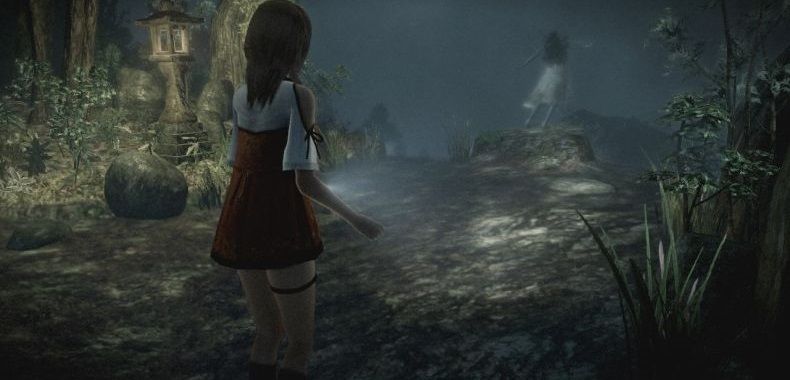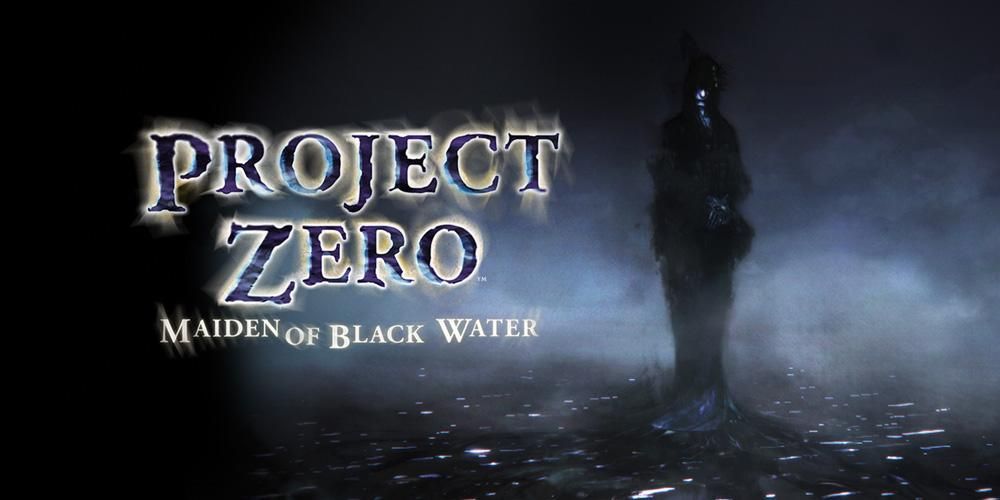- Format: Wii U
- Unleashed: Out Now
- Publisher: Nintendo
- Developer: Koei Tecmo/Nintendo
- Players: 1
- Site: https://www.nintendo.co.uk/games/oms/project_zero_maiden_of_black_water/
- Game code provided by the publisher
It’s one of the games – if not the game – that people have been waiting for since the Wii U was announced. The Project Zero (or Fatal Frame elsewhere in the world) series sees you defend yourself from ghosts with a camera and, yes, the GamePad acts as a camera in your real-world hands. It’s almost the definitive game by default; but is there more to attract you to this entry than the control scheme?
Despite there being a chunky package of horror cliches in here (the bad stuff happens at night, spectral ladies with lank black hair, female protagonists with clothing of questionable practicality, a prophecy, a border between the land of the living and the land of the dead, etc.), the story is actually well written and well told. The past has literally come back to haunt a small village and the mountain above it, Mount Hikami. What starts off as a simple missing persons case (albeit one involving an investigator with special powers) quickly spirals into a situation involving hordes of spirits, and people who are drawn to the mountain in a trance-like state. You’ll skip between controlling three characters (two ladies and a chap) across the course of the game, and they always go to the mountain full of ghosts in the middle of the night, because of course they flippin’ do.
Chapters vary in length quite a bit – we got through the shortest in just under twenty minutes, and the longest in about an hour and a half – but generally, we found the chapter (or ‘Drop’ as the game has it) format to work quite well, and we’d often do just one at a time. The general chapter template runs like this: somebody your character knows is missing, or has been recovered but has run off to the mountain again. You go after them, find them (or evidence of them), then head back to the antiques shop which works as your base of operations. There’s nothing wrong with this setup in and of itself, but it does link directly into the game’s biggest problem.

One cliche it DOES avoid is torches with poor battery life.
The story centres around Mount Hikami and an ancient ritual, the details and significance of which become clear as you play. In terms of the story, therefore, it makes sense that the characters return to the same half dozen or so locations closely tied to the ritual and associated folklore. In terms of gameplay though, it’s something of a mistake. Three quarters of the way through the game you’ve walked almost every square inch of ground that the game has to offer; at least twice in most cases. At the beginning of the game you creep forward slowly, wary of the new and unknown territory. After returning to the same path for the fifth time though you’ll probably just charge ahead, scared of very little and hoping that there’s something new on the horizon.
That’s not to say that there’s no atmosphere. This is a downright creepy game, although that does begin to drain away with the repetition. Special credit must go to the sound design, which is superb. Holding down ZR brings up a ghostly image of the person you’re tracking to help with pathfinding, its progress accompanied by the slow and ominous thumping of a drum. As for the ghosts that you face, they certainly look the part; creepy designs supported by some extremely good visual effects. It’s the sound which makes them truly disturbing, though. Tortured voices that you sometimes strain to hear talk to you both during combat and in defeat, against a wall of broken and unnatural noise.

“Look into my eyes. Not around the eyes, into the eyes. Aaaandd… you’re under.”
We’ve seen some complaints about the controls and, while movement isn’t super-smooth, it never posed any problems for us during play. It’s light years ahead of Resident Evil. Similarly, using the GamePad as your camera (hold it in front of you and press X) works extremely well. If you’re worried about moving and aiming it, don’t; it does make use of motion controls, but if you prefer you can largely rely on the right stick. That’s what we did. Rotating the GamePad is usually only needed for photos which reveal hidden objects, or provide hints.
All but the weakest film is finite and they all take time to load between each picture, encouraging you to pick your shots carefully. The more spectral objects you catch in a picture the more damage you deal, while a ‘Fatal Frame’ (taken the moment before a ghosts hits you) allows you to take multiple shots in a row for a second or two. Time a picture wrong and you leave yourself wide open to attack. Then there’s the ‘wetness gauge’, which increases in the rain, when wading through water, or when hit by a ghost. When you’re soaked you deal more damage – but also take more damage, and encounter more ghosts.
Despite this you never feel in too much danger, and death is rare. So long as you put your camera down you can enter the menu at any time, using consumables to restore health or dry yourself out at your leisure. The only sequence where we died repeatedly was an irritating one where we had to escape an invincible, teleporting enemy that kills instantly. This was at least a fairly short run that was thankfully not repeated.
Finish the main story, and you unlock a brief but interesting line featuring Ayane from Dead or Alive utilising some of the same locations, but stealth-style gameplay. There’s theoretically replay value in the primary chapters at that point – you unlock a new difficulty, and there are multiple endings to be had depending on your actions in the final chapter (each ‘Drop’ selectable from the main menu) – but it’s hard to see any but the most hardcore fans playing the entire game through more than once. The flaws are frustrating, but it’s still a great horror experience that you’ll enthusiastically follow to the end.




Comments